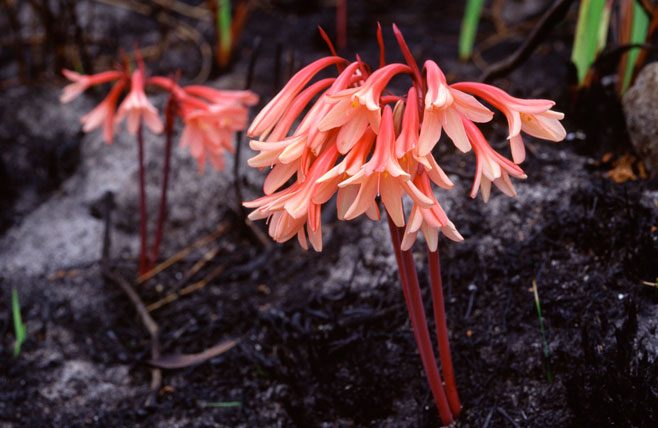Cyrtanthus ventricosus
(Cyrtanthus ventricosus)

Description
Cyrtanthus ventricosus is a deciduous, bulbous plant reaching a height of 100-250 mm. Each winter the plants produce a tuft of linear leaves, 2-7 mm wide, which die back as the dry summer season approaches. The inflorescence, which appears within two weeks after a summer fire, has a 100-200mm tall, hollow scape with a terminal cluster of 1-12 narrowly trumpet-shaped, nodding flowers, 40-50mm long. The pale to dark salmon or crimson flowers have a contrasting, darker crimson band on the midrib of each tepal (a member of the perianth that is not clearly differentiated into calyx or corolla). They are unscented and produce nectar which collects at the base of the tube. The six stamens are arranged in two whorls in which the outer filaments are somewhat longer than the inner. The anthers split open one to two days after the flower opens and then the three short lobes of the stigma become receptive a few days later. Each flower remains open for approximately five to six days then finally loses turgor, becomes narrowly tubular and turns dull red. Individual plants in the population flower more or less at the same time and the entire flowering period lasts approximately two weeks. The three-chambered, inferior ovary, which has 40-60 ovules, develops into a capsule which takes about seven weeks to mature. Cyrtanthus sanguineus is ideally suited to cultivation. This variable, very floriferous species is evergreen and blooms in mid-summer. Flower colour varies from bright pink to orange-red; well grown bulbs often produce two stem each. This species is particular suitable for hanging baskets. It is reported to be easier to get to flower than some of the species.
Taxonomic tree:







